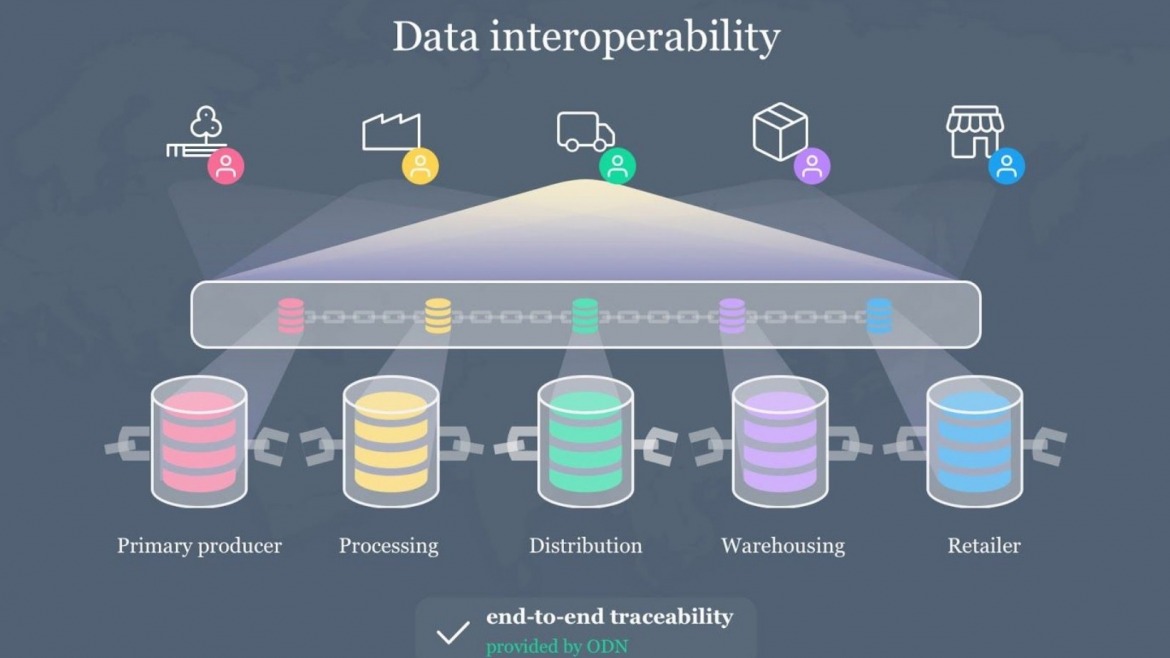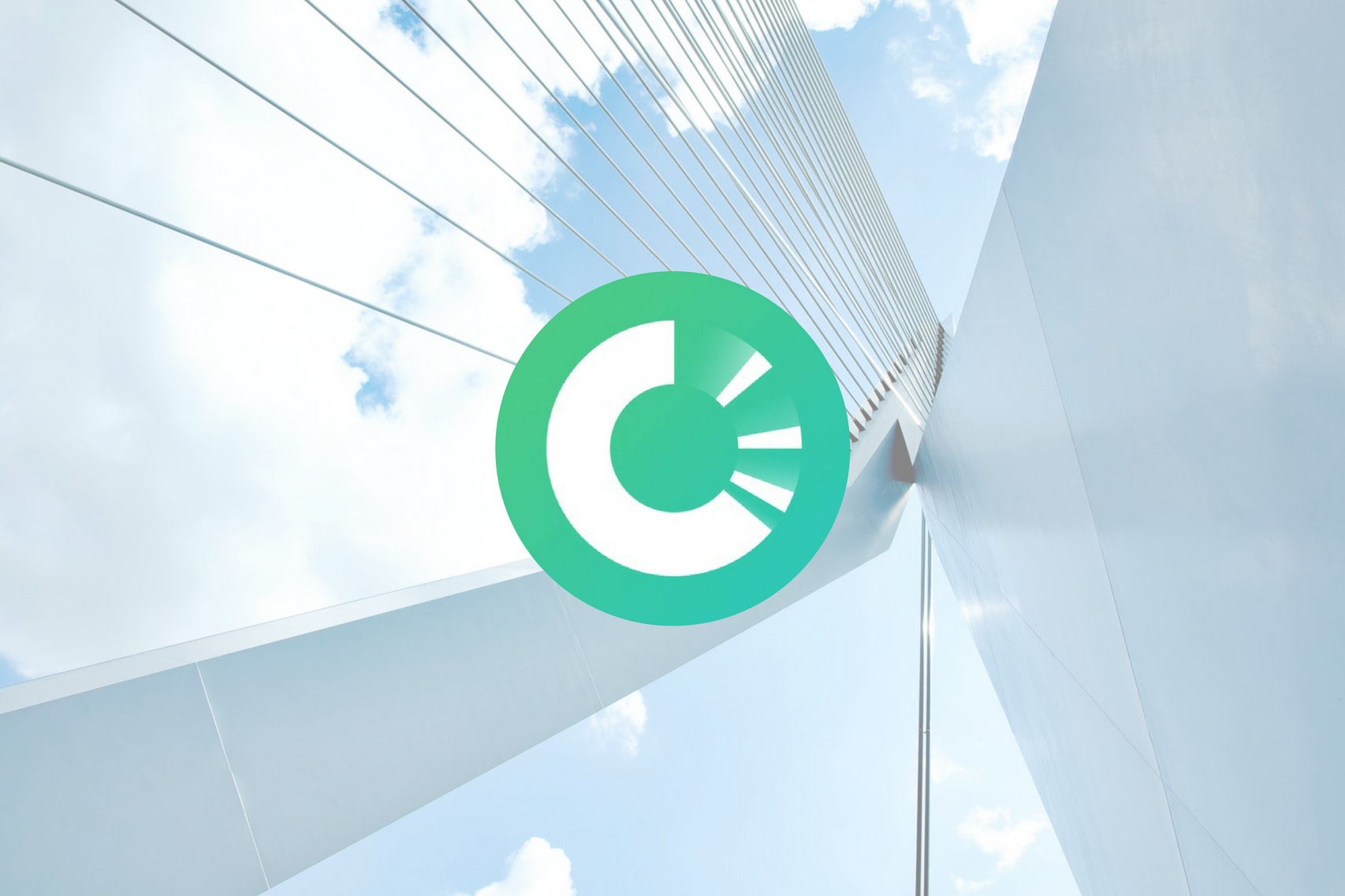In the modern world, just about every product we consume, whether it’s food, clothing, electronics, furniture, comes to us via a long sequence of producers, manufacturers, and sellers.
From origin to purchase, a simple t-shirt might travel around the globe before you see it on a store shelf. The cotton that is the source of that shirt might be picked in the United States, dyed in Indonesia, woven into fabric in Bangladesh, assembled into t-shirts in Colombia, and then shipped to Europe, or anywhere else, to land in a clothing store as a ready-to-wear product.
Each and every point along the production line relies on a chain of trust built out of a principle called, “one step back, one step forward.” The companies assembling the shirts in Colombia trust that the people dying the shirt in Bangladesh verified that they received the quality cotton they were promised. But the Colombian company doesn’t really know if that is true in any way, they just hope that the people before them on the chain did their due diligence.
Trust goes only as far as it can be seen, so, while each company has a knowledge of the companies they receive from and send to, one step before and one step ahead, they can only hope everyone else on the chain maintains a similar level of trust for their immediate partners.
Ultimately, as much as anyone on the supply chain, consumers would like to be confident that what they are purchasing is what they’ve been promised.
These days, consumers care not only about how a shirt looks and feels. There is a growing trend towards ethically-sourced merchandise where consumers know that what they’re buying is not made by companies making ethical or environmental violations. With some products, like food, consumers also have additional concerns like safety and nutritional value, which can be impacted at any stage of the supply chain.
At the moment, the best a consumer can do is turn to regulatory bodies, either divisions of the government enforcing relevant laws, or sometimes non profit organizations who offer certifications. Both solutions are essentially a matter of third party oversight, which involve putting trust in yet another group.
But even aside from the ideological issues of bringing in more groups requiring more trust relationships, regulatory bodies have practical challenges. They might be shown compliant practices on the day they show up for an inspection, but what about all the time they aren’t there?
What Does OriginTrail Do?
OriginTrail provides a helpful protocol solution to the problem of maintaining trust among all players involved in bringing a product to market by making the “chain” in “supply chain” more literal.
Using blockchain technology, OriginTrail can append immutable data to products as they take each step along the supply route. Thus, each participant not only verifies that their conditions are being met but that at every previous stage, the right conditions were also met by everyone else.
This is achieved by making an application layer that allows data to be collected in the real world, and then stored on the blockchain.
There are already product tracking systems in place, most notably under a system known as GS1, which is a non-profit organization that provides standard practices for the way in which companies communicate with each other. The most recognizable standard created by GS1 is the bar code which everyone will have seen on most products.
The bar code system allows companies to print identification markings on their product that can be scanned and tracked by other groups, like when a cashier scans your groceries at a checkout in a grocery store. Warehouses and suppliers can also use bar codes to track inventory as it comes and goes.
However, bar codes are in essence a convenience to help develop interoperability between companies. They do not, in themselves, create a system of verification that ensures any other company using the same bar code has applied the standards and practices you would hope for.
As explained in their whitepaper, OriginTrail is looking to integrate with existing systems like GS1 standard bar codes to provide more depth and reliability of tracking. With GS1 bar codes connected to the OriginTrail blockchain, they go from being merely an identifier of what a product is to a verification of where it has been.

GS1 is not the only existing standards organization OriginTrail hopes to connect with. They name Global GAP, ISEAL, Rainforest Alliance, Bureau Veritas, and IBM as other organizations they are working to ally with to help create an an Internet of Things.
With OriginTrail, businesses and consumers can scan a code or enter information in an application interface, and get back relevant information, such as where components were originally sourced from, who processed them, and more. Exactly what information is revealed, what might be codified to protect proprietary practices, and other details might vary depending on different products and regulations.
Nonetheless, OriginChain will create a lot more transparency, trust, and confidence to supply chain management.
History of OriginTrail
OriginTrail started out by testing their tracking with organic beef products in 2014, and they are still mostly involved in the tracking of food products in general. It wasn’t until 2016 that they introduced a blockchain into their system. In January 2018, they raised US$22.5 million in their ICO.
Since their ICO they’ve successfully launched their testnet, implemented privacy features, and achieved compliance with the GS1 standards that are integral to their business model. Their roadmap is robust and full of details, citing certifications with international bodies, alliances with companies, and entering new markets. Their mainnet is scheduled for launch in Q3 2018, and thereafter they appear to be on track to having all their services fully operational by 2020.
The OriginTrail Team
OriginTrail is based in Belgrade, Serbia, and was founded by Tomaž Levak, Žiga Drev, and Branimir Rakić.
CEO Levak is a member of the Ethereum Enterprise Alliance Supply Chain working group, and has experience managing tech projects in Europe and the Middle East. COO Drev has previously managed complex supply chain setups in Europe and Asia, and CTO Rakić has been working to introduce blockchain to supply chains since 2016. Rounding out the management team is Maja Voje, CMO of OriginTrail, who has 6 years of experience in marketing.
Their team page showcases their core group of 19 members is sourced from the local area.
This is a young startup, with a lot of academic background and coding experience, but not a lot of institutional depth. Their 9 advisors paints a slightly more international picture, with members from around Europe.
Competitors and Challenges
OriginTrail is not the first or only company to recognize that supply chains could benefit a great deal from blockchain technology. Ambrosus is also going for the same market, though they seem to be focused on food and pharmaceuticals specifically. It should be noted that most supply chains have their own specific quirks, and so specialization might be be a good option.
Another potential competitor of OriginTrail is Waltonchain, a company based in China that puts heavy emphasis on RFID chip scanning as part of their business model. In other words, where OriginTrail wants to leverage existing systems for their infrastructure, Waltonchain wants to try and establish new standards and methods.
Both approaches have their checks and balances. Leveraging existing systems means there are a lot of people already familiar with certain aspects of your protocols, but it means you have less control over all the steps you may require people to undertake, possibly forcing undesirable compromises.
Taking control of every part of the data tracking process means you can build the system exactly as you envision, but it may be an uphill battle to get everyone to accept it.
How to Purchase and Store OriginTrail
OriginTrail’s token is called TRAC, and it’s an ERC-20 token, making it storable on any ERC-20 compatible wallet. The total supply is capped at 500 million tokens. You can purchase TRAC on the Kucoin, HitBTC, and IDEX exchanges.
The value in TRACE tokens comes from their utility on the OriginTrail network. Tokens are spent to store, retrieve, and send data about supply chains.
Since TRACE can be bought and sold in a speculative market, that creates the potential for the price to go up, which would be counter to the needs of people on the network looking for stable prices for setting and getting data. However, prices for data saving and retrieval will be determined by auction, which should counter increasing token value for those using OriginTrail as a service.
You can learn more about TRACE token utility here.
Conclusion
The Internet of Things is a topic that gets a lot of press, and the general consensus is that it will be standard practice in the future for almost everything in the world to be tracked and traced for a wide variety of purposes. OriginTrail is one company that is demonstrating a concrete plan for exactly how that will be manifest.
There really isn’t much to criticize in terms of the overall intention of the project. OriginTrail has identified a weak point in the very important world of supply chain management, that of reliable transfer of information all the way up and down the chain, and aims to provide a workable and clearly understood solution.
This doesn’t guarantee success, of course, as the sad truth is many companies fail not because of a lack of a good idea, but because there are infinite devils in the details, competitors will always emerge, and the mechanics of company management is its own challenge to overcome.
That said, if the worst you can say about a company is that they have the same challenges that any company faces, and there’s nothing inherently hard to accept about their fundamental premise, they are doing a lot better than a lot of blockchain companies with blue sky ambitions.
You can find more information about the project on the OriginTrail website, and read their technical specifications in their whitepaper. To get involved in their community, follow them on Telegram, Reddit, or Twitter. You may also want to check out their blog on Medium.

